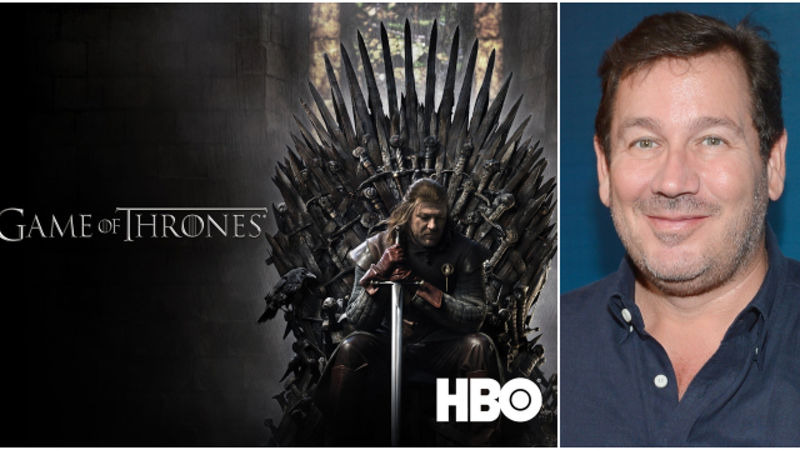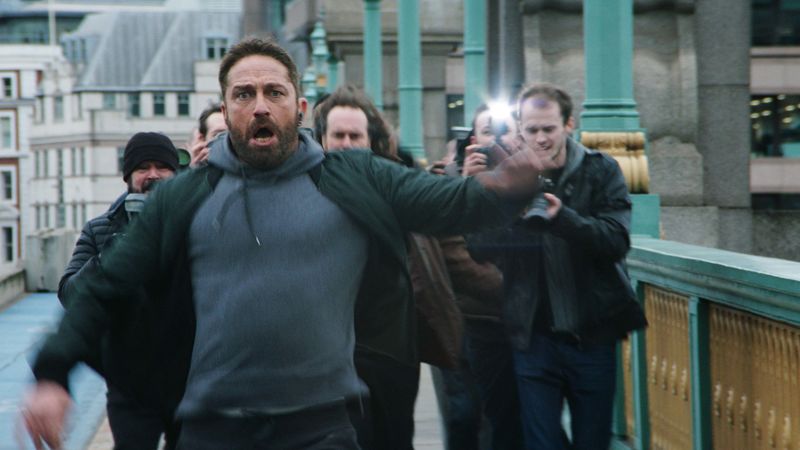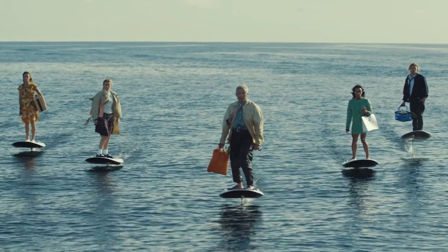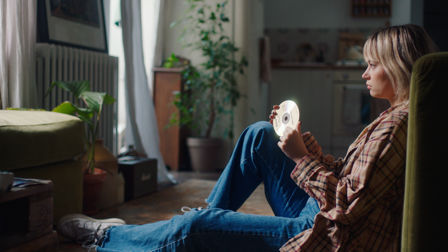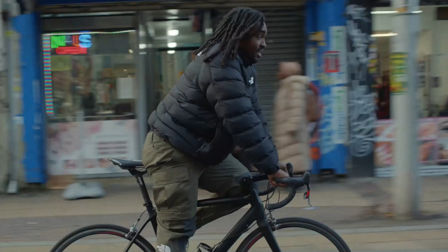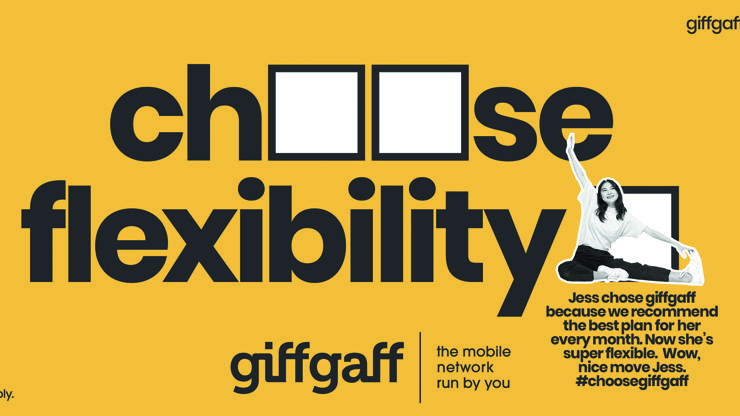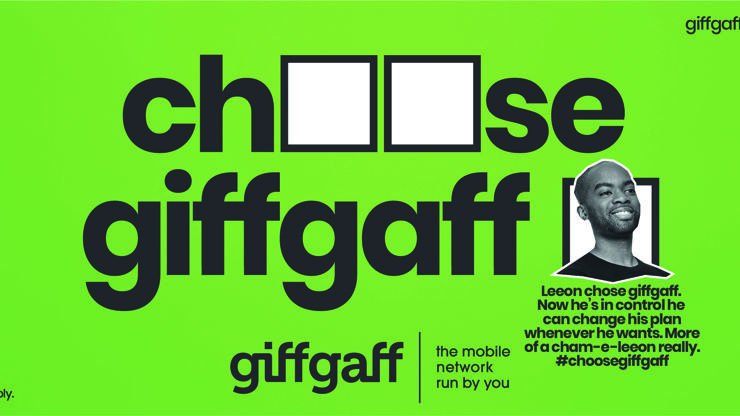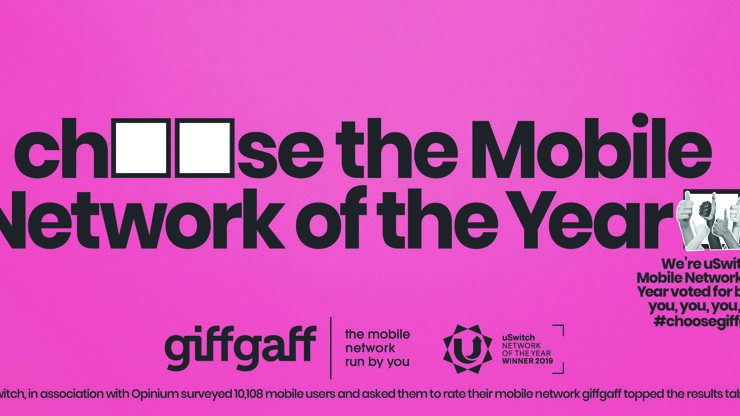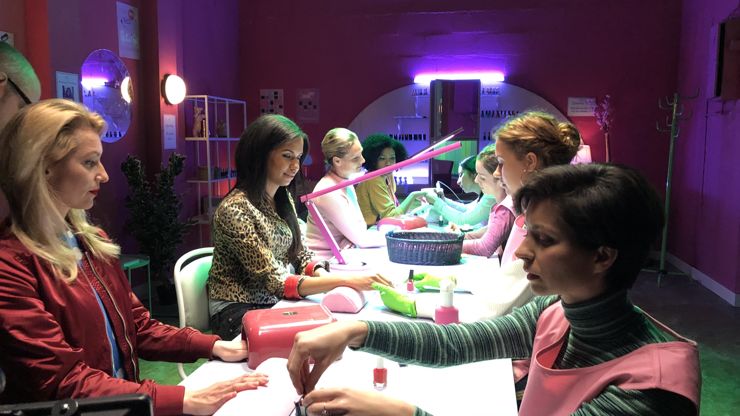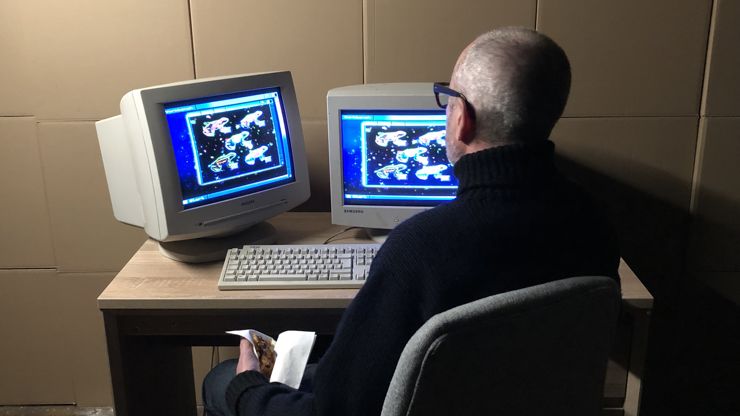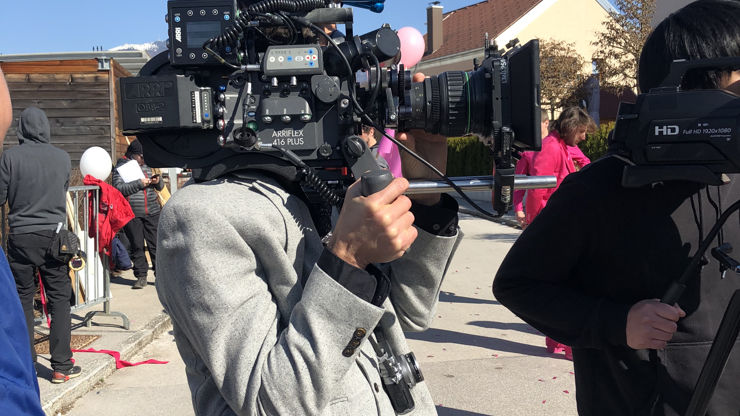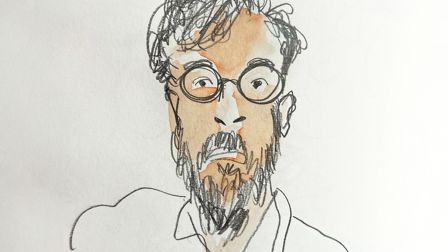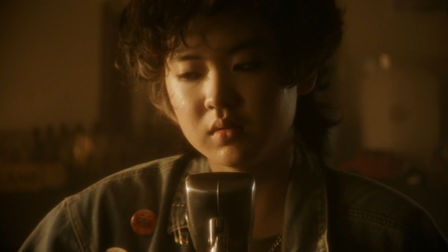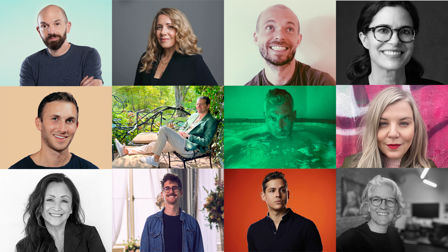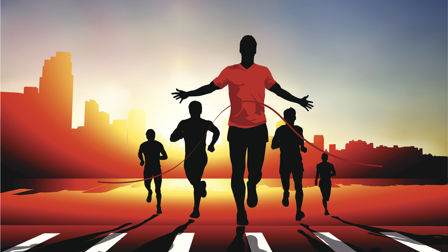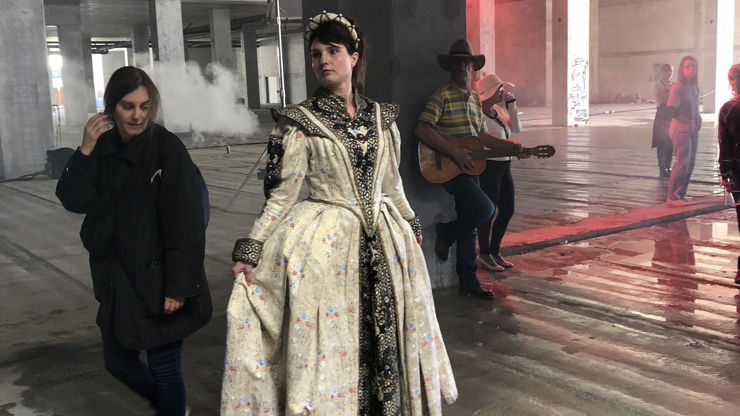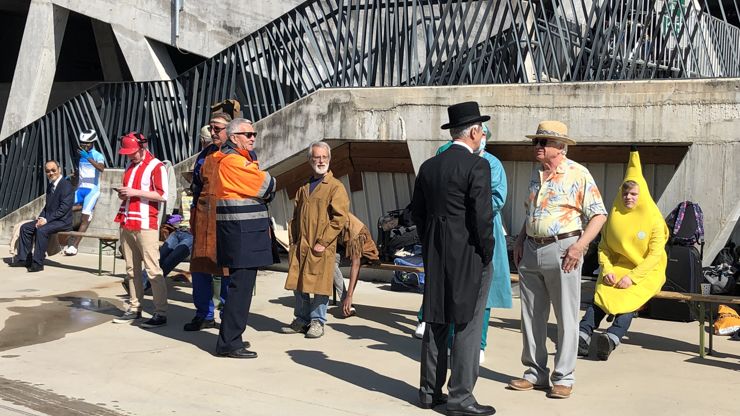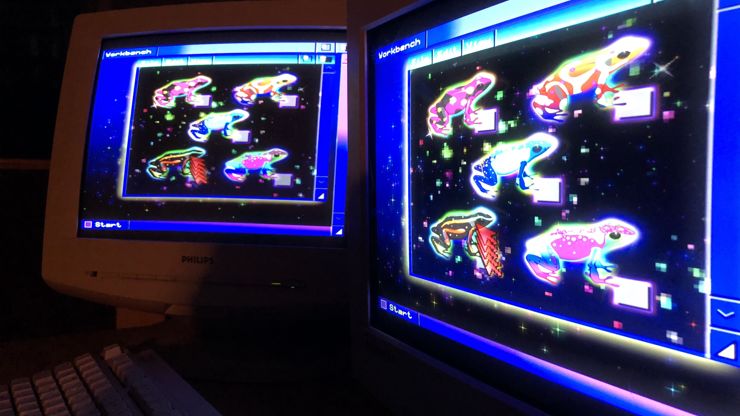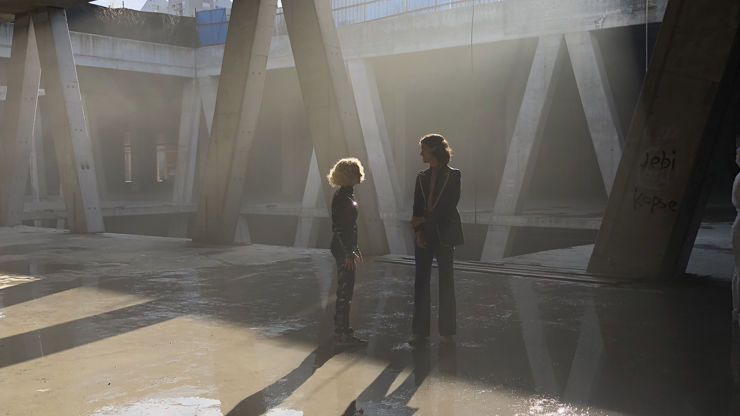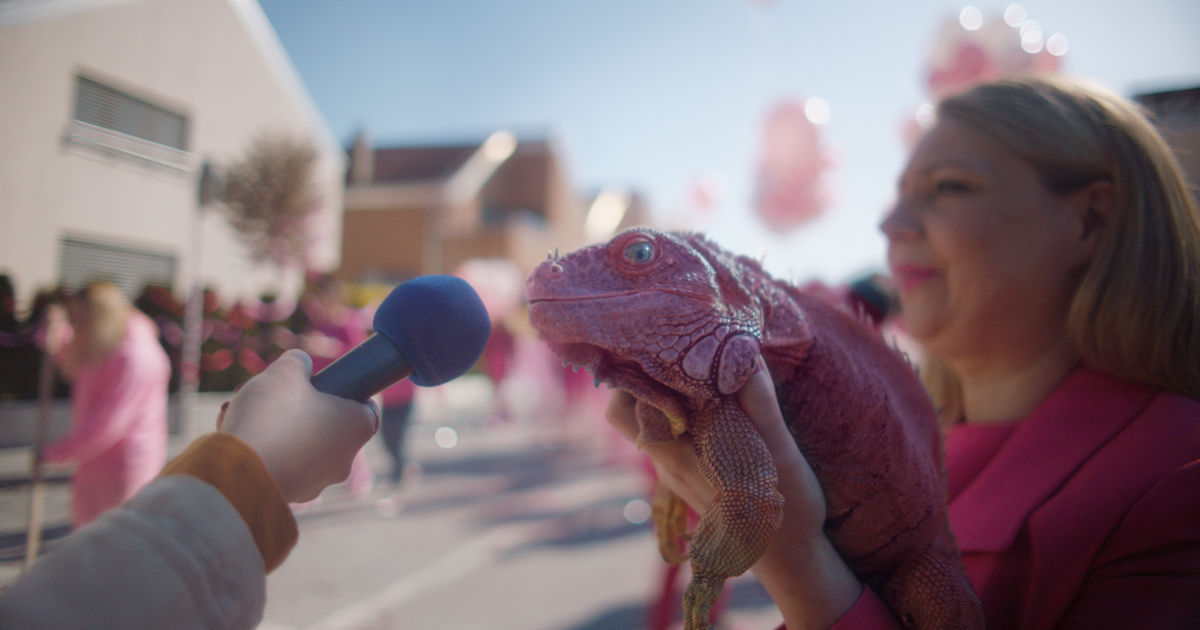giffgaff & Rowson on voting with your feet and the power of choice
As the mobile network releases its surreal ode to democracy, shots caught up with Blink director Fred Rowson and the giffgaff team to hear more about talking iguanas and alternative worlds.
Hands up if you remember Lord Buckethead, the 'intergalactic space lord' and independent parliamentary candidate who stood against Theresa May in the last election?
Well, he might not have won the seat, but he lives on as the inspiration behind a surreal character in giffgaff's latest brand campaign.
Credits
powered by
- Agency giffgaff (Client Direct)
- Production Company Blink Productions
- Director Fred Rowson
-
-
Unlock full credits and more with a Source + shots membership.
Credits
powered by
- Agency giffgaff (Client Direct)
- Production Company Blink Productions
- Director Fred Rowson
- Editing Speade
- Post Production MPC/London
- Service Production Bas Production
- Sound Design Wave Recording Studios
- Producer Tracy Stokes
- Creative Director Fred Rowson
- Producer Corin Taylor
- Executive Producer Paul Weston
- DP Jaime Feliu Torres
- Production Designer Tim Gibson
- Production Manager Abi Jones
- Editor Sacha Szwarc
- Colourist Matthieu Toullet
- Post Producer Louise Unwin
- Sound Designer Dugal Macdiarmid
- Sound Designer Martin Leitner

Credits
powered by
- Agency giffgaff (Client Direct)
- Production Company Blink Productions
- Director Fred Rowson
- Editing Speade
- Post Production MPC/London
- Service Production Bas Production
- Sound Design Wave Recording Studios
- Producer Tracy Stokes
- Creative Director Fred Rowson
- Producer Corin Taylor
- Executive Producer Paul Weston
- DP Jaime Feliu Torres
- Production Designer Tim Gibson
- Production Manager Abi Jones
- Editor Sacha Szwarc
- Colourist Matthieu Toullet
- Post Producer Louise Unwin
- Sound Designer Dugal Macdiarmid
- Sound Designer Martin Leitner
Centred around a fast-paced, kaleidoscopic film created and directed by Fred Rowson of Blink, which explores the notion of choice through glimpses into wacky alternative worlds, #choosegiffgaff cleverly leverages the prevailing mood without ever taking a political stance itself. A surreal ode to democracy and freedom of choice - plus a guest appearance from a talking iguana - the campaign is an ambitious integrated effort, spanning TV, online, social and OOH elements.
We sat down with Rowson, Abi Pearl (Head of Advertising) and Layla West (Head of Social) to find out more about the campaign.
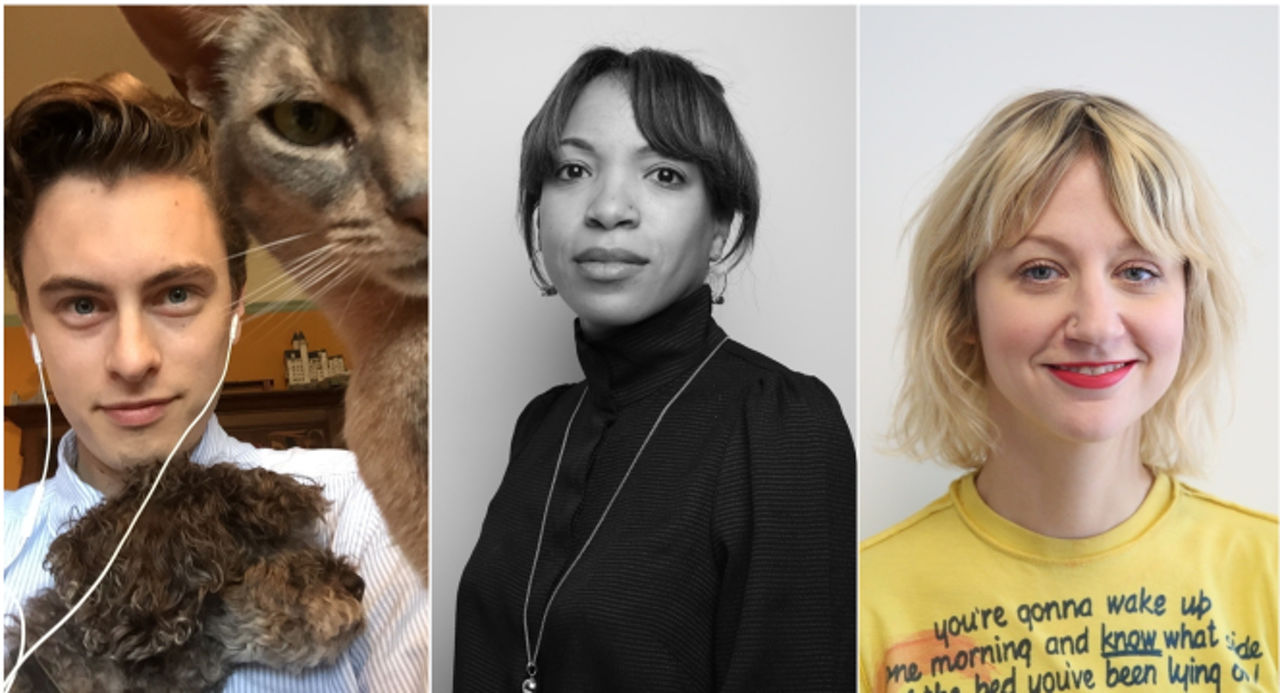
Above (left-right): Fred Rowson, Abi Pearl and Layla West
Tell us about the brief and why Fred was the right director for the job.
Abi Pearl: It’s our big brand campaign for the year, and within our [business] model, we have the luxury of getting to pick people that we really like or stalk the work of. We’d seen the amazing work that Fred had done with Years & Years, and were looking for the opportunity to work with him.
In January, we went to him with this massive brief: to make something iconic that was all about how giffgaff puts our members in control, tap into the cultural zeitgeist, and create a wonderful world that can extend throughout every channel on social, completely cross-platform. Oh, and we have to get it out in April…
Fred Rowson: The brief was 'make an iconic TV ad', but leading up to that, we talked about the cultural feeling at the moment, how they’re feeling about the world, what people are stressed about, what they value. We also talked about the attitude we wanted, which was really fun but also grown-up in terms of the ideas it was discussing.
We’re not saying one specific choice is good or bad; it’s the fact that you can choose that is great.
AP: We’re living in a world where people don't know what's going on, there's this massive loss of control, and since the ad was going out in April, we thought, let’s talk about that [feeling] - but do it with masses of positivity, so it subverts the conversation and becomes something we’re really excited about. As a brand, giffgaff have always been democratic, we really believe in freedom, and whatever the choice you make, we’re not going to have an opinion on it, we'll just give you an option.
At the first meeting, when Fred presented four ideas, we tried to have poker faces. When we saw the first idea on paper, we were literally beaming and bursting with excitement. What Fred did from that first iteration was really tap into our product: taking us on this incredible journey which would be cinematic and beautifully crafted, but which was grounded in our product. To balance those things is incredibly difficult, and it’s rare to find a director who really ‘gets’ your product. So it was literally: *poker face, poker face*, but you’ve got the job!
I’ve always dreamt of being able to make something that is right ‘of the moment’, and usually by the time you create something, that moment has moved on. I love the strength of the idea and the fact you can distil it down to two tick boxes on the side of a bus.
Layla West: In the first response to the brief, Fred mentioned Instagram and how it could play out on different channels. For someone that's always worked online only, that was music to my ears. It was important to us that when it came to social we were punching above our weight and capturing attention, not just putting out a cut-down of the ad. We actually had a second unit, so were able to create extra content beyond what you see in the 60-second TVC.
Above: the OOH campaign, produced by Made By Blah.
There’s a clear nod to Brexit amongst the references to voting, democracy, politics and exercising choice. Can you unpack the idea and inspiration for us a bit further?
FR: We’re not saying one specific choice is good or bad; it’s the fact that you can choose is great. Conceptually, it links back to the work I’d done for Years & Years: in addition to the music videos, I’d written a whole back story which filtered through to the live shows, so the characters that you saw on stage were the same characters from the short film [Palo Santo]. We wanted to take the same approach to this, to give the sense that you’re seeing a little slither of a much larger universe.
We always knew it was going to be lots of very quick scenes of choice; so one of the first things we came up with was popping two different balloons. Then we wanted a scene of people voting in an election; but going beyond that into something more surreal, and expanding what the definition of choice is. The scenes started to get bigger; the scene with the orange and pink people at the door, for example, is like a weird fantasy world, but it all had to be communicated by a single, quick line. We shot tons of stuff, so what you see, for example, in that scene is just a small section from a ‘pick pink, or pick orange’ world.
We were talking about Boaty McBoatface and doing a parody scene with stock footage, but it became more of a tonal touchstone.
It gives a sense that there’s more to see, but then we’re onto the next thing, and the next thing. And that pace really helps the message - we never wanted to take a position on this political climate, we’re just commenting on it in an abstract way. The fact that you’re going so fast means there’s never time to wonder: “What did they mean by that?” You’re three scenes down the line by then.
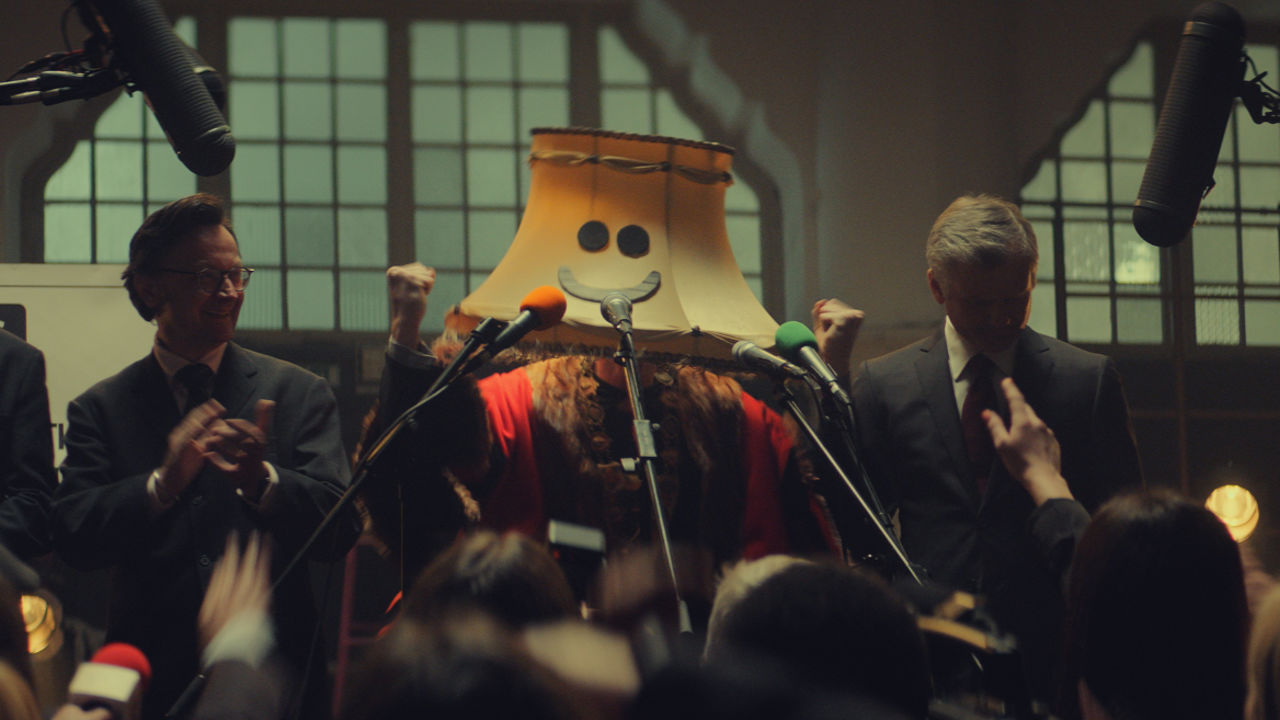
One of the scenes that we went back and forth on was the novelty political candidate [above], who was inspired by Lord Buckethead. The idea was, what if someone like that won an election? What would that mean for the constituency, and for the world?
At the beginning of the process, we looked at giffgaff’s Instagram feed, and the way they celebrate their members and everyone being eclectic and different, so that was another guiding principle - the idea that the whole thing should feel like a big collage, and every scene feels it’s in a different time and a different place. The tone [of the film] does feel very British, but then you also have scenes that feel like they take place in a weird ‘70s dream, or a futuristic version of Tokyo.
We could have edited this a billion ways, but you have to be really clear about what your ‘red thread’ is.
Given the very loose brief, how much could you plan ahead? And how do you keep viewers focused on the key message with so many different visual 'distractions' going on?
FR: We had a very good relationship in terms of keeping it very flexible in terms of the creative and the script, so [producer] Corin Taylor and I could go away and figure out what’s possible; where can we shoot; what makes sense creatively. That feels like a very natural way for me to work, when you’re constantly testing the idea against what’s achievable and is this space, or lens, or character telling the story and serving the idea best? And we could always go back to Abi and say “this is a better way”, and she’d always say yes.
The usual experience when you’re making an ad is that you all agree on something, and it’s set in stone. Then, you go and make it and find out you can’t do this or that – but because you agreed it, you have to. And you get to the end, and it’s a mess. It’s like you’ve been shoving a square peg into a round hole because you signed a contract months ago.
AP: We could have edited this a billion ways, but you have to be really clear about what your ‘red thread’ is. Our vision was always that is was this fun journey, but it couldn’t feel arduous.
Above: behind the scenes images from the shoot.
Was the plan always to shoot in lots of different formats or was that something which evolved along the way?
FR: The formats thing came about very early on, at one point we were considering stock footage and news clips. We were talking about Boaty McBoatface, and doing a parody scene with stock footage, but it became more of a tonal touchstone – the idea of funny choices. But from that came the idea of shooting in different formats - what does it to you, the way it adds to the collage-y feel. Some of those formats, like the fish-eye lens, really make it feel like you’re standing there with the people in the scene, as though they’re holding the camera, which gives you that really nice connection. Other scenes are shot on 16mm film, which feels very textural, like found footage, to give you that sense of travelling through time.
LW: The parts that are shot on iPhone work really well for everything we’re doing through the line, particularly on social: we’ve got these selfie perspectives that will hopefully disrupt things on Instagram – people probably won’t even be able to tell it’s an ad.
There were no arbitrary decisions about taste: the only question was: ‘Is this serving the idea?'
Was it all done in one shoot? How many different locations were involved?
AP: It was a three-day shoot in Slovenia: we were shooting from 8am in the morning to 11pm at night. For locations, we doubled up quite a lot – the ‘pink or orange’ scene was shot in suburbia, the mah-jong player in the studio, then the town hall, the gym, the bar with the spiral staircase. The ‘pick a side’ scene was shot in a half-built shopping centre with a massive drop in the middle.
FR: I’ve got a really core team of people that I’ve been working with for years, and when you have a brief like this and a client who is so open and collaborative, it’s like a dream come true – not just for me, but all of my creative team and the team at Blink who made it happen and even contributed another director to the second unit. We could all get on board with it and invest in it emotionally. Sometimes you have projects that you think will be great, but the idea gets chipped away at. Here, the atmosphere was so open everyone felt they could make suggestions. And that made the process much faster. We could squeeze in three more scenes a day, because I could just go and ask Abi, ‘What do you think of that? Can we try this?’
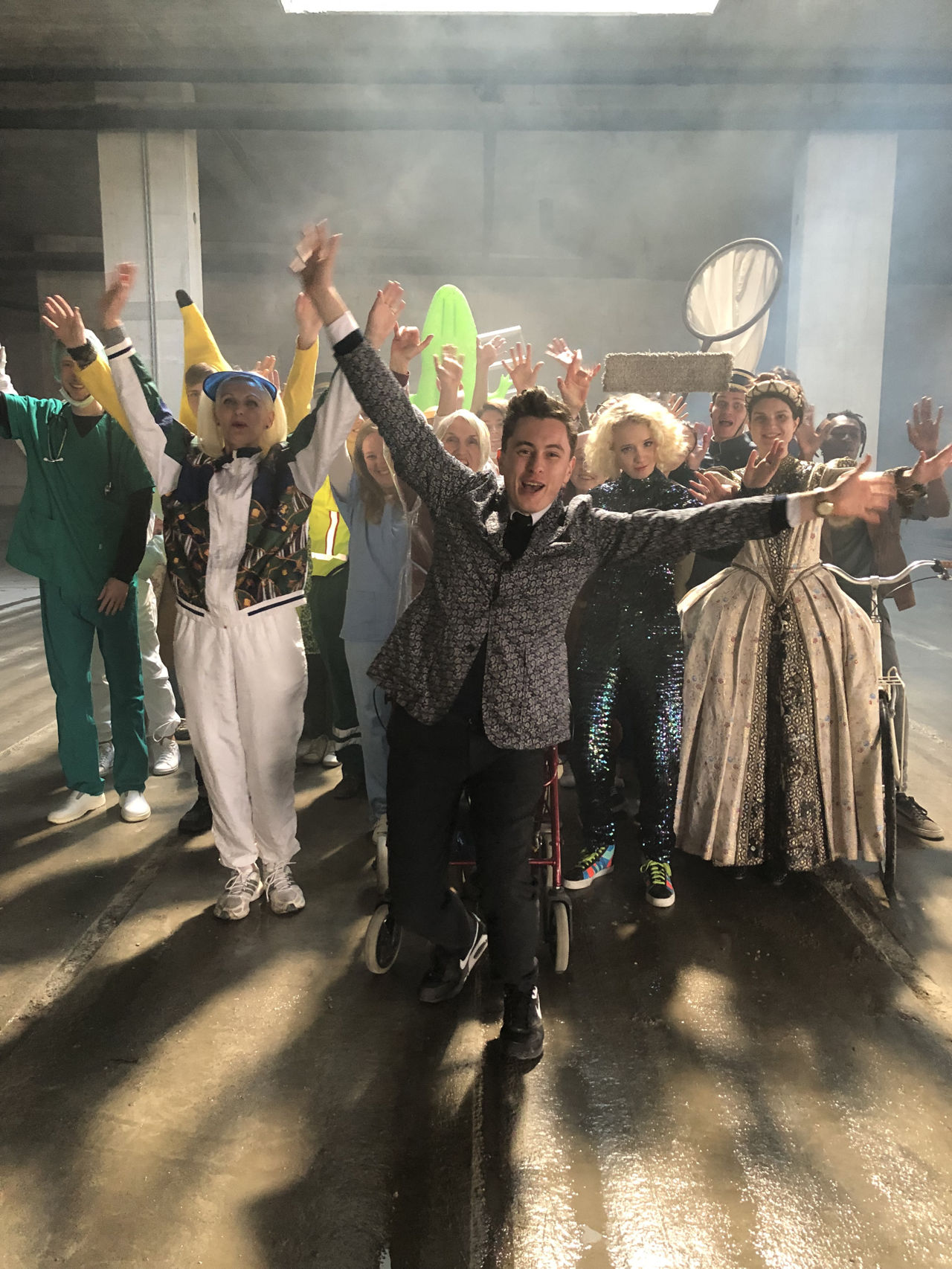
Above: Rowson on set with the cast.
The film has a huge cast, were any of them giffgaff members?
FR: We had a cast of about 140 people, and we thought we might need more, but our AD was very adept at doubling up.
AP: The cast ranged from age 8 to 72. There are giffgaff members in the OOH campaign, but not the film: we’ve done a few projects with giffgaff members before, but you’re asking a lot of people to ask them to turn up for a long and arduous shoot.
One of our favourite moments in the film is the motley crew of people in the ‘pick a side – or not’ scene. Tell us a bit more about that.
FR: The description of the scene in the script, which was signed off, was simply ‘lots of people run around a room and pick a side.’ It’s a key example of us then thinking through the process - what would they wear, who would it be. When you have an idea, the best thing is to let it sit in your mind and percolate, and let new details come to you, until it’s the best it can be.
Our first thought was it would be people wearing boiler suits in two different colours – black and white, or red and blue. And if we’d just decided that was it, it would be fine, but to be able to come back to the client a week before the shoot, and say, ‘What if it was as if aliens had picked up people from all around the world, in the middle of doing things – a bride, a cowboy, someone designing a dress, a footballer, someone relaxing on the beach – and put them all in one room?’ was great, without having to sign off every outfit and spending two third of the PPM going through the wardrobe.
LW: It was so funny turning up to this disused shopping centre and watching a man in a banana suit, a beekeeper, and someone dressed as Elizabeth I having their lunch.
Above: More behind the scenes images from the shoot.
How did you choose the music?
AP: That was our TV producer’s [Tracy Stokes at Like Minded Individuals] suggestion. After we saw the edit we were thinking of going down the composition route, and then Tracy said, ‘What about Bow Wow Wow I Want Candy? And it works so well – it’s got that ‘80s feel and it’s joyful, which makes you feel choice is great.
Packing all that footage into a 60-second spot must have been a tough editing job. Did anything end up on the cutting room floor?
FR: Only one scene, which was a boy blowing a bubble out of his nose. In the edit, we had it to storyboard, and then we had it to script, as per the voiceover. We didn’t even end up doing a straight storyboard edit because it was a very quick turnaround. We put it together, and said, ok, it isn’t quite telling the story or transmitting the idea as clearly as it should be, so let’s start rewriting as we edit, and changing it around. The version that you see now is basically what we showed Abi and Leila.
AP: We signed it off on the second edit. To be honest, I never expected a storyboard edit, but even the notes we had on the first edit were about being ruthless and working out what can we afford to lose, to make it a slightly easier journey for people.
FR: The comments on the edit – and this went right back to the shoot and to the very first meeting - were always about the idea: it was never, ever, ‘Oh, that guy in the background, he’s wearing something weird, can he go?’ There were no arbitrary decisions about taste: the only question was: ‘Is this serving the idea?’ It made the process so much quicker, because it either does, or doesn’t serve the idea. And if it doesn’t, it goes. But there are loads of other shots and characters in the 10-second and 30-second spots that are coming out later this year, which keeps expanding the [giffgaff] world.
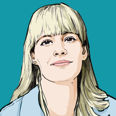)
